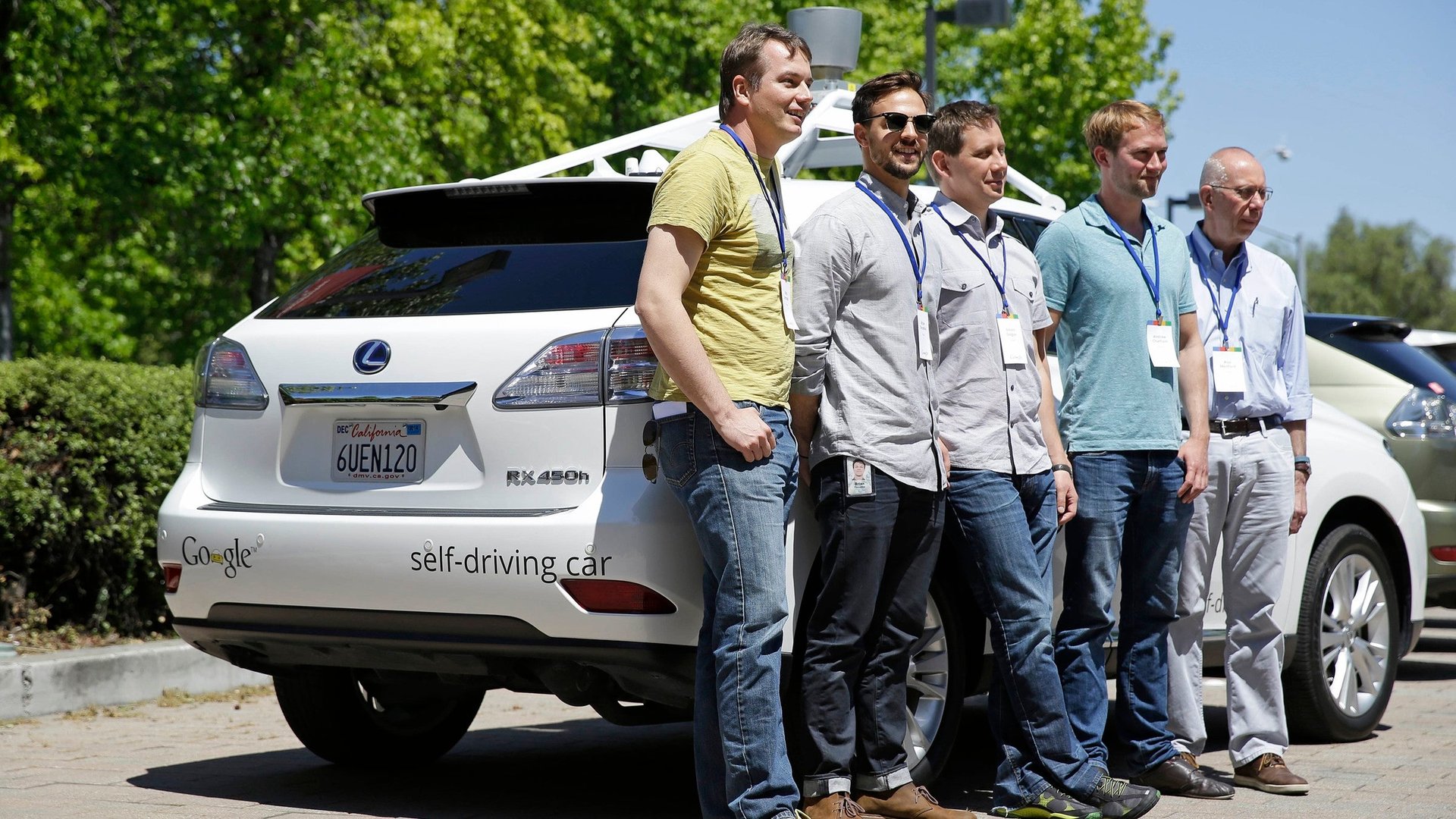These are the secrets Google wanted to keep about its self-driving cars
Google’s experimental self-driving cars have traveled more than 700,000 miles on California’s roads with nothing more serious than a fender bender, and that one while a human was driving. But if the company had gotten its way, you might not know about the episode.


Google’s experimental self-driving cars have traveled more than 700,000 miles on California’s roads with nothing more serious than a fender bender, and that one while a human was driving. But if the company had gotten its way, you might not know about the episode.
According to documents obtained under freedom-of-information legislation and seen by Quartz, Google lobbied Californian regulators for permission to keep minor accidents secret, as long as the car was not driving itself at the time. Ron Medford, director of safety for Google’s self-driving car program, wrote that the regulations “should be amended to limit required reporting to accidents involving vehicles operated in autonomous mode.”
Google also wanted to remove a section obliging it to record data related to “disengagements”—when the robotic car hands back control to its human test driver. These disengagements may be quite routine, for example, when the vehicle approaches an area it doesn’t have maps for. But they could also be potentially dangerous bugs that show a vehicle is unable to handle a certain road layout, traffic scenario, or weather event.
The California Department of Motor Vehicles (DMV) wants the disengagement reports, which include the location and weather conditions, to help it create driver tests for when autonomous vehicles eventually go on sale to the public.” But Google doubts their usefulness. “This data does not provide an effective barometer of vehicle safety. During testing most disengages occur for benign reasons, not to avoid an accident,” Medford wrote. He revealed that adding new features to Google’s self-driving cars could sometimes actually increase the number of disengagements, even if the car’s safety improved overall. Medford asked for the section to be deleted entirely.
Google believes that only accidents that happen while its cars are driving themselves are relevant to their safety, and that handing over huge amounts of disengagement data wastes everyone’s time. “An overly broad reporting requirement will create a significant burden on manufacturers. But it will also create a significant burden on DMV… and will pose a particular challenge since DMV does not have the existing engineering expertise to interpret the data,” Medford wrote.
Google also worries that secrets about its cars’ cutting-edge capabilities might leak to rivals. “This information is highly confidential, particularly during the testing phase before a product is brought to market. Public disclosure of this information could cause great financial harm to Google,” Medford wrote.
Finally, Google suggested that forcing manufacturers to collect all this data might force test drivers to avoid disengagements where possible. “Test drivers may feel pressure to reduce the number of disengagements,” he wrote.
Other manufacturers agreed. According to a document posted by the DMV (pdf), GM, Chrysler, Volkswagen and Mercedes Benz, which were asked to comment on the regulations, all questioned the need to report every time a human takes control of the car, and quibbling with the requirements for someone to qualify as test driver. On the latter point the California DMV largely stood firm, noting that “a manufacturer should ensure that it does not employ a driver who is not capable of safely operating the vehicle.” But it did excuse manufacturers from having to report routine disengagements, recording instead only when the autonomous technology failed or when the driver needed to take immediate control of the vehicle for safety reasons. The first set of disengagement reports from Google’s self-driving cars are due in Jan. 2016.
There was no escape from reporting every tiny scrape Google’s vehicles are involved in, however. The DMV wants to ensure it captures crashes that happen while the cars move into or out of autonomous mode, and also wants baseline accident figures to measure how often accidents happen for autonomous vehicles generally.
Google responded, “We note with some disappointment that the vast majority of our comments were not incorporated.” The company is unlikely to give up. After all, there are still 46 US states that have yet to pass laws allowing self-driving cars on public roads.
Google declined to comment.
Mark Harris is a Seattle-based writer. Follow him on Twitter at @meharris.